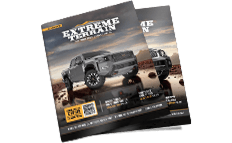Understanding Automotive Parts: A Comprehensive Guide Automotive parts can be broadly categorized into several key areas, such as powertrain and drivetrain components, suspension and brake systems, engine parts, electrical systems, body and interior pieces, and every day wear-and-tear parts. Each boasts a unique material composition, manufacturing process, performance characteristics, and compatibility considerations.
Key Categories of Automotive Parts
Powertrain and Drivetrain Components
For example, powertrain components, which encompass the engine, transmission, driveshaft, and differential, are typically engineered from high-strength alloys to withstand complex movements and high temperatures. Fabrication of these components often involves casting or forging processes, coupled with CNC machining to achieve precise finishes and dimensions.
Body and Interior Pieces
In contrast, body parts, such as bumpers or side mirrors, might be manufactured from plastics, composites, or sheet metal via molding, stamping, or welding. Compatibility for these parts is primarily dictated by make and model, but factors like the vehicle's age, mileage, and maintenance history may also influence fitment.
Responses to Operating Conditions
Responses to operating conditions are another categorizing attribute of automotive parts. For instance, brake system parts like rotors and pads need to maintain consistent efficiency under substantial heat and stress—the overall performance will be gravely compromised if the quality tapers off when the parts heat up due to friction.
Quality Standards and Performance Indicators
Quality standards, while broad for the automotive industry, are often fine-tuned by manufacturers for specific vehicle models. A key performance indicative for aftermarket parts is 'OE' (Original Equipment) quality, which indicates that a part meets or surpasses the quality of the original manufacturer's part.
The 2021 Nissan Frontier
For the 2021 Nissan Frontier, for example, the original parts were designed to uphold the vehicle's performance, fuel efficiency, and safety ratings. Replicating—or exceeding—these standards is essential for aftermarket accessories and parts, and rigorous testing protocols and continuous quality control measures are typically in place to ensure this.
Selection Criteria for Aftermarket Parts
When choosing aftermarket parts for a vehicle, particularly a newer model like the 2021 Nissan Frontier, understanding the granular differences and quality markers is essential. A seemingly minor factor like the aluminum alloy classification of an engine component can explain changes in performance and longevity and should be considered. Automotive parts selection is an exact science that draws from manifold fields such as materials engineering, mechanical design, and manufacturing protocols. Understanding this landscape requires careful study and consideration of various factors such as the vehicle's age, operating conditions, and maintenance history, as well as the specifications of each part, to deliver optimal vehicle performance, efficiency, and safety.















